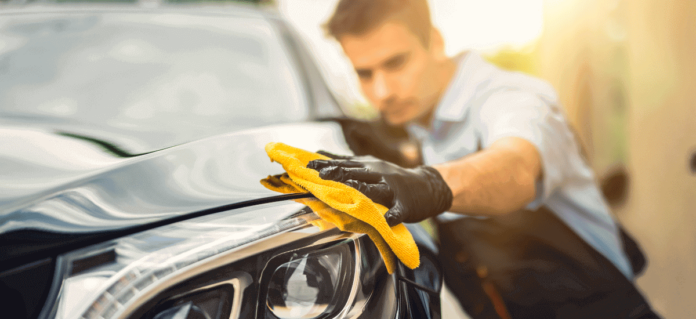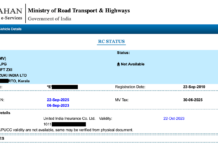Car ownership provides us with convenience and freedom, but it also comes with a fair share of responsibilities and expenses. Among these responsibilities is the need for car insurance to protect ourselves and our vehicles from unforeseen events.
While traditional car insurance policies offer varying degrees of coverage, there’s a specialized type of insurance that provides comprehensive protection – bumper-to-bumper insurance.
In this in-depth guide, we’ll explore what bumper-to-bumper insurance is, how it differs from regular car insurance, and provide you with a step-by-step guide to navigating the car insurance claim process for a truly effortless experience.
Understanding Bumper-to-Bumper Insurance:
Bumper-to-bumper insurance, also known as “zero depreciation” or “comprehensive insurance,” is a specialized form of car insurance that provides the highest level of coverage for your vehicle. It’s designed to minimize your out-of-pocket expenses in the event of an accident, theft, or damage to your car. Unlike standard car insurance policies, bumper-to-bumper insurance offers the most extensive protection for your vehicle, with minimal financial burden on your part.
The primary difference between bumper-to-bumper insurance and traditional car insurance lies in how they handle depreciation and coverage. With traditional insurance, the insurer considers the depreciation of your car’s parts when assessing claims. This means that in the event of an accident or damage, you may be required to pay a significant portion of the repair or replacement costs, especially for parts that have depreciated over time.
On the other hand, bumper-to-bumper insurance accounts for minimal to no depreciation, ensuring that most of your car’s components and parts are fully covered. This results in minimal out-of-pocket expenses during a claim.
How Does Bumper-to-Bumper Insurance Work?
Bumper-to-bumper insurance offers comprehensive coverage for your vehicle, covering various aspects such as:
- Accidental Damage: In the event of an accident, whether it’s a minor fender-bender or a major collision, bumper-to-bumper insurance covers the repair or replacement of damaged parts, often with minimal to no depreciation applied.
- Theft: If your car is stolen, you’re eligible for a complete reimbursement of the vehicle’s current market value without accounting for depreciation.
- Natural Disasters: Bumper-to-bumper insurance extends protection to cover damages caused by natural disasters like floods, earthquakes, and storms.
- Vandalism: Acts of vandalism, including graffiti or malicious damage, are covered under this type of insurance.
- Fire: In the unfortunate event of a fire, your insurance will cover the repair or replacement of your vehicle’s damaged components.
- Zero Depreciation: As mentioned earlier, one of the key benefits of bumper-to-bumper insurance is the absence or minimal application of depreciation, ensuring that you receive full compensation for repairs or replacements.
Step-by-Step Guide to Effortless Claims with Bumper-to-Bumper Insurance:
Navigating the car insurance claim process can be a daunting task, but having bumper-to-bumper insurance can significantly ease the burden. Here’s a step-by-step guide to ensure an effortless and smooth claims process:
- Step 1: Safety First – Assess the Situation
The first step in the claims process is to ensure your safety and that of others involved in the accident. Check for injuries and call for medical assistance if needed. If the accident is minor and all parties are safe, move the vehicles to a safe location to avoid further accidents.
- Step 2: Gather Information
Collect all relevant information about the accident, including:
- – Date, time, and location of the accident
- – Names and contact information of the other parties involved
- – Vehicle details, including make, model, and registration number
- – Details of any witnesses to the accident
- – Photos of the accident scene, including vehicle damage
- Step 3: Contact Your Insurer
Notify your insurance company about the accident as soon as possible. Provide them with all the information you gathered in step 2. You can typically report a claim through various channels, including phone, email, or the insurer’s mobile app.
- Step 4: Filing the Claim
Your insurer will guide you through the claim filing process. They may ask for additional documents, such as a copy of your driving license, policy documents, and a copy of the FIR (First Information Report) if the accident involved another vehicle.
- Step 5: Survey and Assessment
An insurance surveyor will assess the damage to your vehicle. In the case of bumper-to-bumper insurance, the absence of or minimal depreciation will ensure that most of the damage is fully covered, resulting in fewer out-of-pocket expenses.
- Step 6: Repairs and Replacement
Once the assessment is complete, you can proceed with the repair or replacement of the damaged parts. Your insurer will guide you to authorized service centers or garages where the repairs will be carried out.
- Step 7: Payment and Settlement
After the repairs or replacement work is completed, your insurer will settle the bills directly with the repair shop. You will only be responsible for any applicable deductibles or policy excess.
- Step 8: Claim Approval and Documentation
Your insurer will review the claim and issue a claim approval letter. Be sure to keep all the documents, including the approval letter, as they are essential for tracking the claim and ensuring you receive the full benefits of your bumper-to-bumper insurance.
- Step 9: Regular Updates
Stay in communication with your insurer throughout the claims process. They will keep you updated on the progress of your claim and any additional information or documents required.
- Step 10: Post-Claim Follow-Up
Even after your claim is settled, it’s a good practice to follow up with your insurer. Ensure that all repairs are satisfactory and that your vehicle is in good condition.
Benefits of Bumper-to-Bumper Insurance:
- Comprehensive Coverage: Bumper-to-bumper insurance provides the highest level of coverage, including protection against depreciation, ensuring that most of the costs are covered in the event of damage or an accident.
- Minimal Out-of-Pocket Expenses: With minimal to no depreciation applied, you’ll experience significantly reduced out-of-pocket expenses during a claim, making bumper-to-bumper insurance a cost-effective choice in the long run.
- Financial Security: This type of insurance offers peace of mind and financial security, knowing that you won’t have to bear the full burden of repair or replacement costs.
- Value Retention: Bumper-to-bumper insurance helps maintain the value of your vehicle by ensuring it is fully repaired or replaced when necessary, keeping it in the best possible condition.
- Claims Assistance: Insurance companies often provide dedicated claims support and assistance, making the process straightforward and stress-free.
Is Bumper-to-Bumper Insurance Right for You?
While bumper-to-bumper insurance offers comprehensive protection and significant benefits, it’s essential to consider your individual needs and budget. Here are some factors to consider when deciding if bumper-to-bumper insurance is right for you:
- Vehicle Value: If you own a new or high-value vehicle, bumper-to-bumper insurance can be an excellent investment to protect your asset.
- Driving Habits: If you are a careful and responsible driver who rarely makes claims, this insurance type can reward you with minimal out-of-pocket expenses.
- Budget: Consider your budget and premium affordability. Bumper-to-bumper insurance may have a slightly higher premium than traditional insurance due to its extensive coverage.
- Vehicle Age: For older vehicles, the need for extensive coverage may decrease, making traditional insurance more cost-effective.
- Future Plans: Think about your plans for the vehicle. If you intend to keep it for an extended period and want to maintain its value, bumper-to-bumper insurance is a valuable choice.
In conclusion, bumper-to-bumper insurance, also known as zero depreciation insurance, provides the highest level of coverage and protection for your vehicle. This type of insurance minimizes out-of-pocket expenses by accounting for minimal to no depreciation, ensuring that most repair or replacement costs are covered.
When navigating the car insurance claim process with bumper-to-bumper insurance, the steps are straightforward, and the process is designed to be as effortless as possible. To decide if this type of insurance is right for you, consider your vehicle, driving habits, budget, and future plans. Bumper-to-bumper insurance can be a valuable investment in the long-term protection and value retention of your vehicle.
Also Read: “We do not need to make it mandatory” – Union minister Nitin Gadkari on 6 airbags rule for cars







